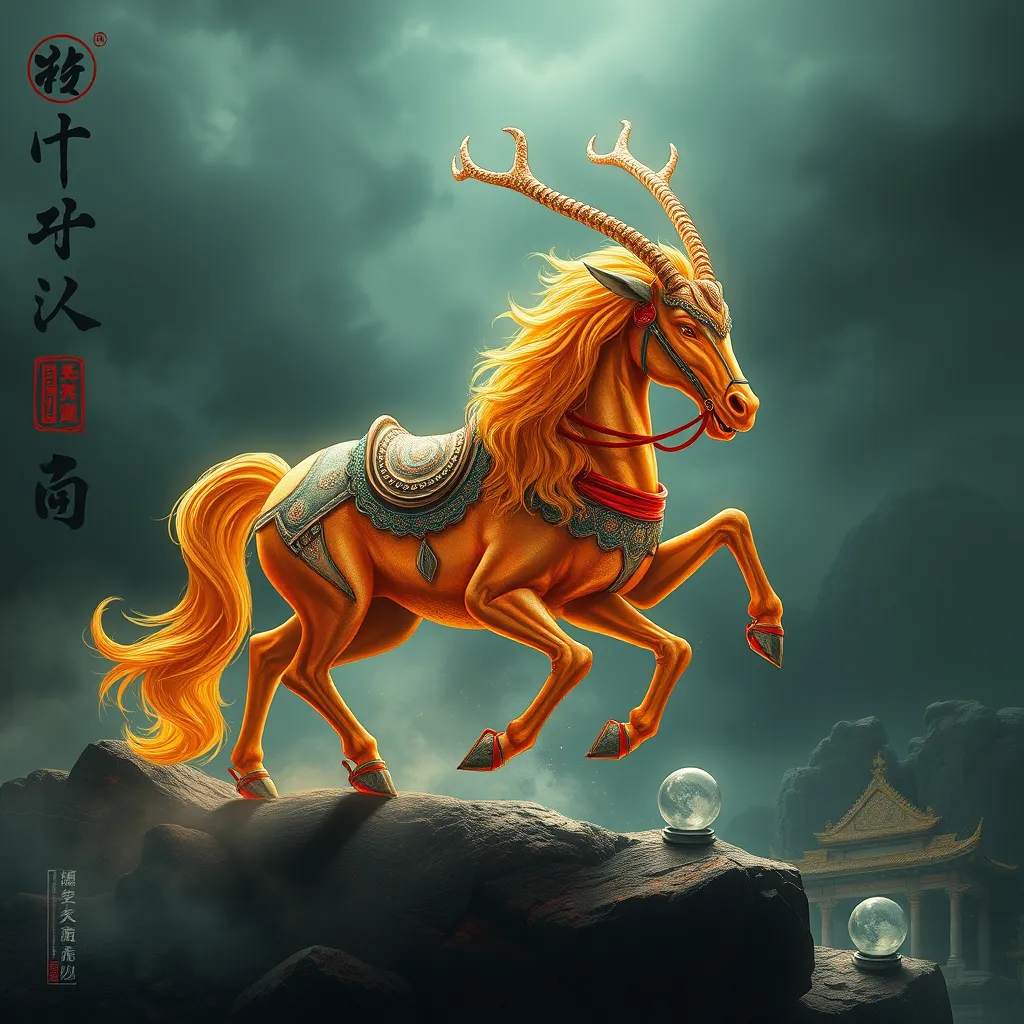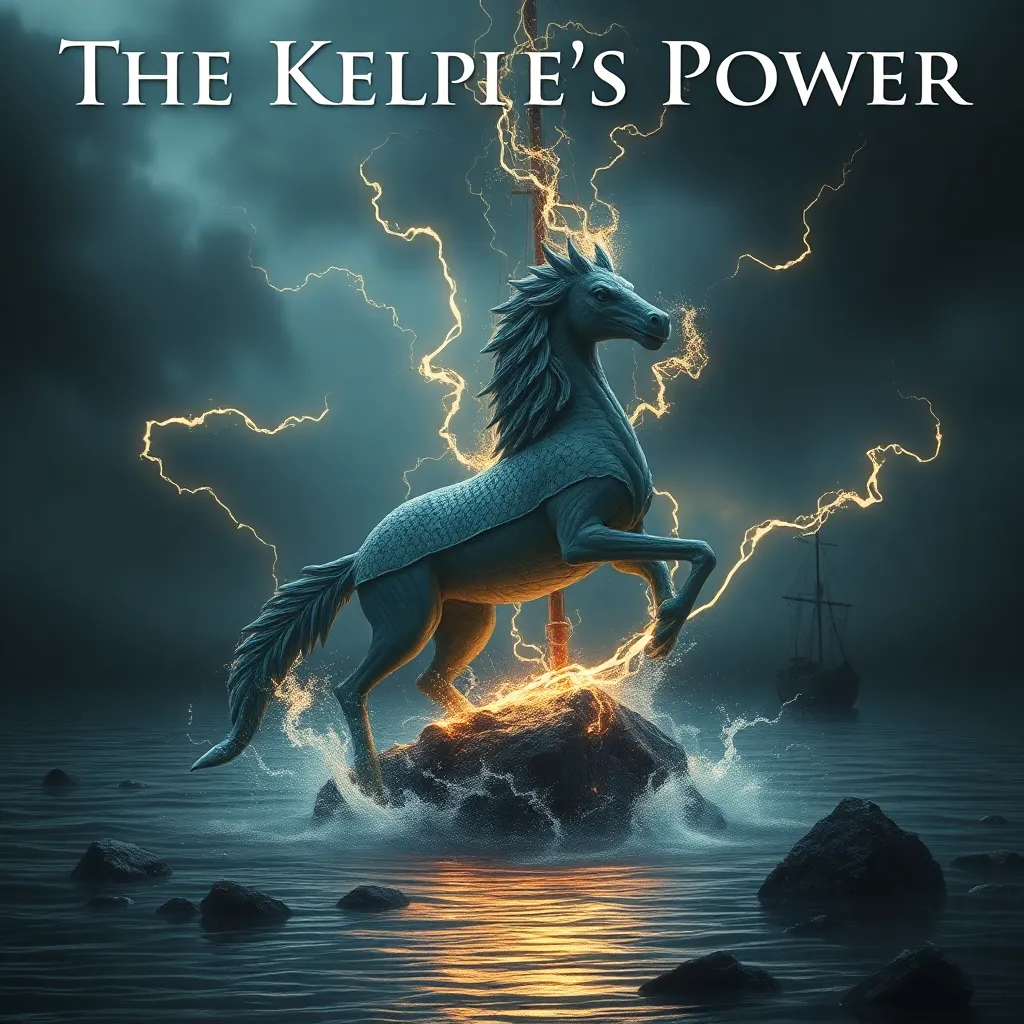The Centaur in Chinese Mythology: Exploring the Centaur’s Role in Chinese Beliefs
I. Introduction
The centaur, a mythical creature with the upper body of a human and the lower body of a horse, has fascinated people across cultures for centuries. In various mythologies, centaur-like beings symbolize a range of concepts, from duality and harmony to nature and civilization.
This article aims to explore the role of centaur-like figures in Chinese beliefs, examining how these creatures are represented in ancient texts, folklore, and modern interpretations. By delving into the historical context and cultural significance of these beings, we can gain a deeper understanding of their place in the rich tapestry of Chinese mythology.
II. Historical Context of Centaur-like Figures in Chinese Mythology
A. Ancient Chinese texts and depictions
While the classic centaur is predominantly a feature of Greek mythology, ancient Chinese texts also reference beings that share a similar duality. The Shan Hai Jing (Classic of Mountains and Seas) contains descriptions of various hybrid creatures, some of which exhibit traits akin to centaurs.
B. Comparisons with Western centaur mythology
In Western lore, centaurs are often depicted as wild and unruly, embodying the conflict between civilization and barbarism. In contrast, Chinese representations tend to focus on harmony, balance, and the connection to nature. This difference highlights the cultural variations in how similar beings are interpreted.
C. The evolution of centaur-like figures in Chinese lore
Over the centuries, centaur-like figures in Chinese mythology have evolved from ancient descriptions to more nuanced representations in folklore. As Chinese society transformed, so too did the meanings attributed to these beings, reflecting changing values and beliefs.
III. Representation of Horses in Chinese Culture
A. Symbolism of horses in Chinese mythology
Horses are highly significant in Chinese culture, often symbolizing strength, loyalty, and nobility. They are associated with various deities and are seen as messengers between the heavens and the earth.
B. The connection between horses and deities
In Chinese mythology, several deities are linked to horses, such as:
- Ma Zu, the goddess of the sea, who is often depicted riding a horse.
- Guan Yu, the god of war, who is frequently shown alongside his famous steed.
C. The significance of equestrian skills in ancient China
In ancient Chinese society, equestrian skills were vital for military prowess and trade. The ability to ride and manage horses was not only practical but also a mark of nobility and status, further embedding the horse’s significance in cultural beliefs.
IV. Centaur-like Beings in Chinese Folklore
A. Notable examples of centaur-like creatures
Chinese folklore features several beings that resemble centaurs. One notable example is the Qilin, a hooved chimerical creature often depicted with dragon-like features and capable of bringing good fortune.
B. Characteristics and traits of these beings
Centaur-like beings in Chinese mythology often possess a blend of human intellect and animal strength. They may also embody wisdom and benevolence, serving as protectors and guides in various tales.
C. Their roles in Chinese stories and legends
These creatures frequently appear in stories that emphasize the importance of harmony and the balance between human and animal natures, reflecting the philosophical underpinnings of Daoism and Confucianism.
V. The Centaur as a Symbol of Duality
A. The blending of human and animal traits
The centaur represents the duality of human nature, embodying both the civilized and the primal. This blending signifies the interconnectedness of all life, a theme prevalent in Chinese philosophical thought.
B. Philosophical implications of duality in Chinese thought
In Chinese philosophy, duality is often explored through concepts such as Yin and Yang, which embody the balance and interdependence of opposing forces. The centaur serves as a metaphor for this balance, illustrating the need for harmony between human intellect and animal instinct.
C. The centaur as a representation of harmony and balance
By embodying both human and animal traits, centaur-like beings remind us of the importance of harmony in our lives and the world around us. They encourage a holistic view of existence, where both aspects are respected and embraced.
VI. The Centaur in Chinese Art and Literature
A. Artistic depictions of centaur-like figures
In traditional Chinese art, centaur-like figures may appear in paintings and sculptures, often depicted in scenes that celebrate nature and the cosmos. These representations highlight the beauty of the natural world and the creatures within it.
B. Literary references and their significance
Literary works often reference centaur-like beings as symbols of wisdom and guidance. These creatures may serve as mentors or protectors in stories, reflecting their significance in the cultural narrative.
C. Influence of these depictions on contemporary art and culture
Modern Chinese artists continue to draw inspiration from traditional depictions of centaur-like beings, integrating these figures into contemporary works that explore themes of identity and heritage.
VII. Modern Interpretations and Cultural Significance
A. The centaur’s relevance in modern Chinese society
In today’s context, centaur-like figures may serve as a bridge between tradition and modernity, representing the ongoing dialogue between ancient beliefs and contemporary values.
B. Adaptations in popular media (film, literature, etc.)
Contemporary adaptations in film and literature have reimagined centaur-like beings, often incorporating elements of fantasy and adventure, which resonate with modern audiences while preserving their cultural roots.
C. The centaur as a bridge between tradition and modernity
As symbols of duality and balance, centaur-like beings continue to be relevant, reflecting the complexities of modern life while honoring ancient traditions.
VIII. Conclusion
In summary, the centaur’s role in Chinese mythology is multifaceted, encompassing themes of duality, harmony, and cultural significance. Understanding these centaur-like figures within their historical and cultural context reveals their importance in shaping Chinese beliefs and values.
As we continue to explore the rich legacy of these beings, we recognize their enduring relevance in both traditional and modern narratives, highlighting the universal themes of balance and interconnectedness that resonate across cultures.



